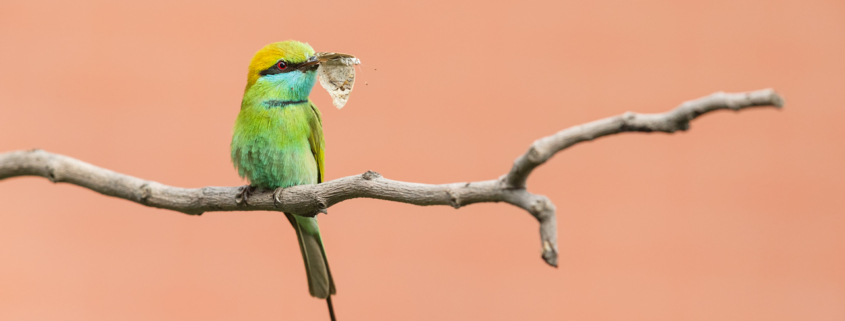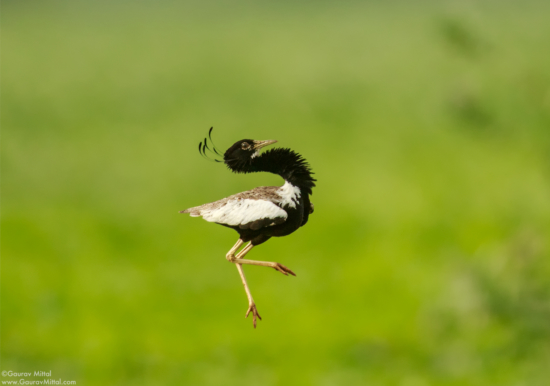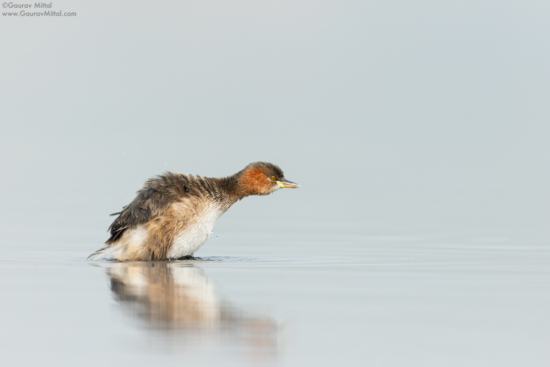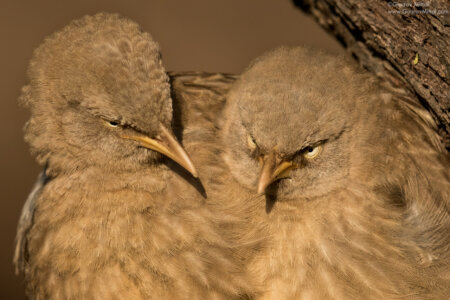Wildlife Photography Composition Tips for Creating Impact
As a moderator for a popular online wildlife photography portal, I critique and give composition tips to help photographers improve their images. Photography composition is at the core of developing standout images that simultaneously convey the photographer’s vision and his or her understanding of the subject. What we choose to include in our photography composition helps express the story positively or negatively. In this article, I share some fundamental photography composition tips to help you create compelling wildlife photos.
Avoid putting the subject in the center of the frame
This is the most common mistake made by novice photographers. A centered subject with equal space on each side looks lost.
Furthermore, it draws attention away from the subject and toward the surrounding dead space. This technique leaves the viewer wondering what the photographer wanted to convey.
Use the Rule of Thirds
This is the most widely used composition technique across all genres of photography and every photographer learns it. The basic premise is to separate the image into thirds, both horizontally and vertically, and place the subject on the four intersecting lines. This technique can be applied to birds or other wildlife situations.
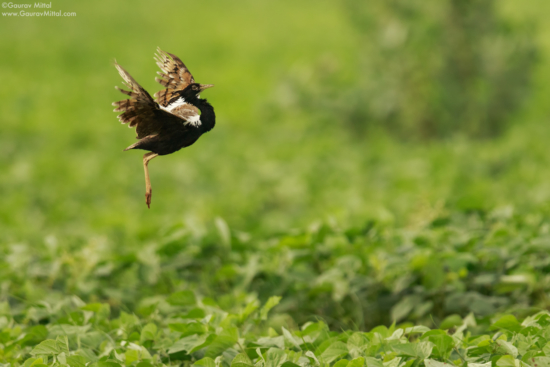
Photography composition using Rule of Thirds – Lesser Florican – Canon 7DMK2 | 600mm | 1/3200s@F/5.6
The Rule of Thirds forces conscious decisions about which elements remain in the composition and which are left out. Moreover, the rule facilitates creativity. For example, in the image above, I was able to include the bird’s ground habitat by placing the bird on the top left intersecting lines and I was able to tell the story of its unique leaping display during mating season.
Avoid tight Photography Composition
Another common mistake is related to tightly-framed or cropped images. This makes the subject appear suffocated or cramped, as in the image above. Ideally, you should leave more space in the direction the subject is looking, walking, or flying. In so doing, you let the audience imagine the subject’s action or behavior which allows for a connection with the subject.
In the image above, I left more space to the right to give the bird more space for its dive. This leaves the viewer to visualize the action in the empty space.
Embrace the tight photography composition when necessary
After reading the last tip, this may seem contradictory. Tight compositions do not always work, though they are well-suited for shooting bird or wildlife behavior and portraits. They not only allow the viewer to get an intimate look at the subject, but they also add a human touch.
In the image above, my goal was to direct the viewer’s attention to the two birds’ close interaction; therefore, I composed a frame-filling scene by getting close to the busy birds.
Avoid distracting backgrounds
A distracting background can make your subject superfluous in the context of the whole frame. For example, in the image above, the birds’ interaction and feeding action stands out against a clean background rather than compete with it. This entails moving around, getting high or low, and finding uncluttered space. Frame the bird and pay close attention to the background.

Use clean background for wildlife photography composition – Common Babbler – Canon 1DX | 600mm+1.4x | 1/3200x@F5.6
Avoid chopping off body parts
Either by design or in post-processing, body parts are cut off when you are too close to your subject or if the images are poorly cropped.
This leaves your subject looking unattractive and handicapped. Here is an important point… we often come across a situation where the animal is partially hidden behind foliage, making the lower part of the body invisible. Invariably, you forget and lose track of their feet while shooting, cutting out this essential element. In the image above, I saw the animal behind the foliage and framed it to ensure I had enough space at the bottom to let the viewer sense the location of its feet.
Shoot at eye level
When shooting birds or wildlife, the subject is most often low on the ground or high up in a tree or the sky as in the image above. It is much easier to point your camera down or up to shoot than to shoot at eye level.
However, embracing this difficulty rewards you with wildlife photos that help your viewer connect to the subject. At eye level, the subject looks directly into the camera without looking up or down. If you cannot get high enough, then move back to achieve a perception closer to eye level.
Make eye contact with your subject
This is crucial. Do not get lost in composition alone. All of the wildlife photography tips discussed here are useless if the main subject in your image does not make eye contact.
The head angle, the eye catch light, and the pose are critical elements of composition. Although each has equal weight in terms of ensuring an image with strong overall composition, eye contact ultimately draws viewers in and creates the connection.
It is important that you make effort to avoid any overexposure and underexposure. While this is not a wildlife photography composition tip; it is the ultimate image breaker. A beautiful bird photography composition with a posing subject is undone by poor exposure. Check the histogram on your camera and watch for blinking highlights or underexposure; adjust the settings accordingly.
What about Cropping?
Cropping for composition has been hotly debated in wildlife photography, with good points made by both proponents and detractors. Cropping an image is a good way to show a close-up of your subject, especially when you cannot get close enough for full-frame shots. I consider cropping for composition a tool for final touches when an image needs a dash of flair. That being said, this technique limits your creativity and hinders your field effort. It’s an easy path that is counterproductive in terms of improving your skills. Moreover, when you crop an image, you start degrading its quality by throwing away pixels. Field composition makes you think before pushing the shutter button.
Keep in mind that these wildlife photography composition tips provide a framework to create visually pleasing images; it is always good to think outside the box, deviate from established techniques, and develop your own shooting style. Feel free to share your own wildlife photography tips in the comments below.

